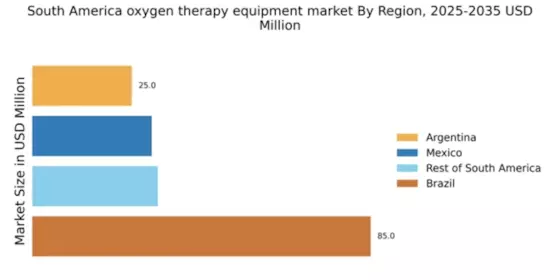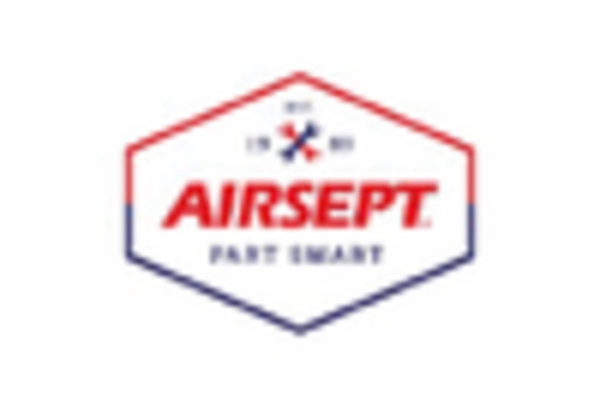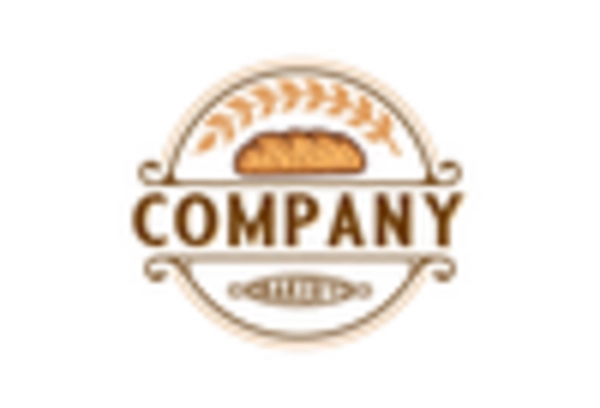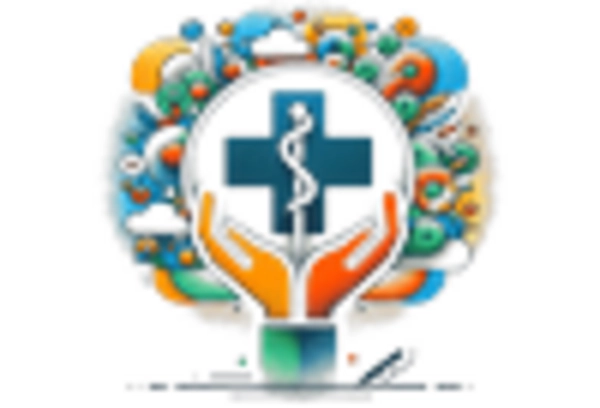Expansion of Healthcare Infrastructure
The ongoing expansion of healthcare infrastructure in South America is a pivotal driver for the oxygen therapy-equipment market. Governments and private sectors are investing in healthcare facilities, particularly in rural and underserved areas, to enhance access to medical services. This expansion includes the establishment of specialized respiratory care units and the procurement of advanced oxygen therapy equipment. As healthcare facilities improve, the demand for oxygen therapy solutions is expected to rise correspondingly. Recent reports indicate that healthcare spending in South America has increased by approximately 8% annually, facilitating the acquisition of modern medical technologies. The oxygen therapy-equipment market stands to benefit from this trend, as improved healthcare infrastructure leads to greater availability and utilization of oxygen therapy products.
Rising Awareness of Oxygen Therapy Benefits
There is a growing awareness among healthcare professionals and patients regarding the benefits of oxygen therapy, which serves as a significant driver for the oxygen therapy-equipment market. Educational initiatives and campaigns aimed at promoting the advantages of oxygen therapy for managing chronic respiratory conditions are gaining traction. This increased awareness is likely to lead to higher adoption rates of oxygen therapy solutions across South America. Market data indicates that the demand for portable oxygen concentrators has surged by approximately 15% in the last year, reflecting a shift towards more convenient and accessible treatment options. The oxygen therapy-equipment market is thus experiencing a transformation, as patients become more informed about their treatment options and seek effective solutions for their respiratory health.
Technological Innovations in Medical Devices
Technological innovations in medical devices are driving advancements in the oxygen therapy-equipment market. The introduction of smart oxygen delivery systems, which offer real-time monitoring and data analytics, is revolutionizing patient care. These innovations enhance the efficiency and effectiveness of oxygen therapy, making it more appealing to both healthcare providers and patients. The market is witnessing a shift towards devices that integrate with telehealth platforms, allowing for remote monitoring and management of patients' oxygen needs. This trend is particularly relevant in South America, where access to healthcare can be limited in certain regions. The oxygen therapy-equipment market is likely to see continued growth as these technological advancements improve patient outcomes and streamline healthcare delivery.
Increasing Prevalence of Respiratory Disorders
The rising incidence of respiratory disorders in South America is a crucial driver for the oxygen therapy-equipment market. Conditions such as chronic obstructive pulmonary disease (COPD) and asthma are becoming more prevalent, leading to a heightened demand for oxygen therapy solutions. According to health statistics, approximately 10% of the population in certain South American countries suffers from chronic respiratory diseases, which necessitates the use of oxygen therapy equipment. This trend is likely to continue, as urbanization and pollution levels increase, exacerbating respiratory issues. Consequently, healthcare providers are investing in advanced oxygen therapy technologies to meet the growing needs of patients. The oxygen therapy-equipment market is thus positioned for growth, as more individuals seek effective management of their respiratory conditions.
Aging Population and Increased Healthcare Needs
The demographic shift towards an aging population in South America significantly impacts the oxygen therapy-equipment market. As the population ages, the prevalence of age-related health issues, including respiratory diseases, is expected to rise. By 2030, it is projected that over 20% of the population in several South American countries will be aged 60 and above, creating a substantial demand for oxygen therapy solutions. Older adults often require long-term oxygen therapy, which drives the need for various oxygen delivery systems. The oxygen therapy-equipment market must adapt to these demographic changes by providing innovative and user-friendly products tailored to the elderly. This demographic trend suggests a sustained growth trajectory for the market, as healthcare systems strive to accommodate the increasing healthcare needs of older adults.


















Leave a Comment